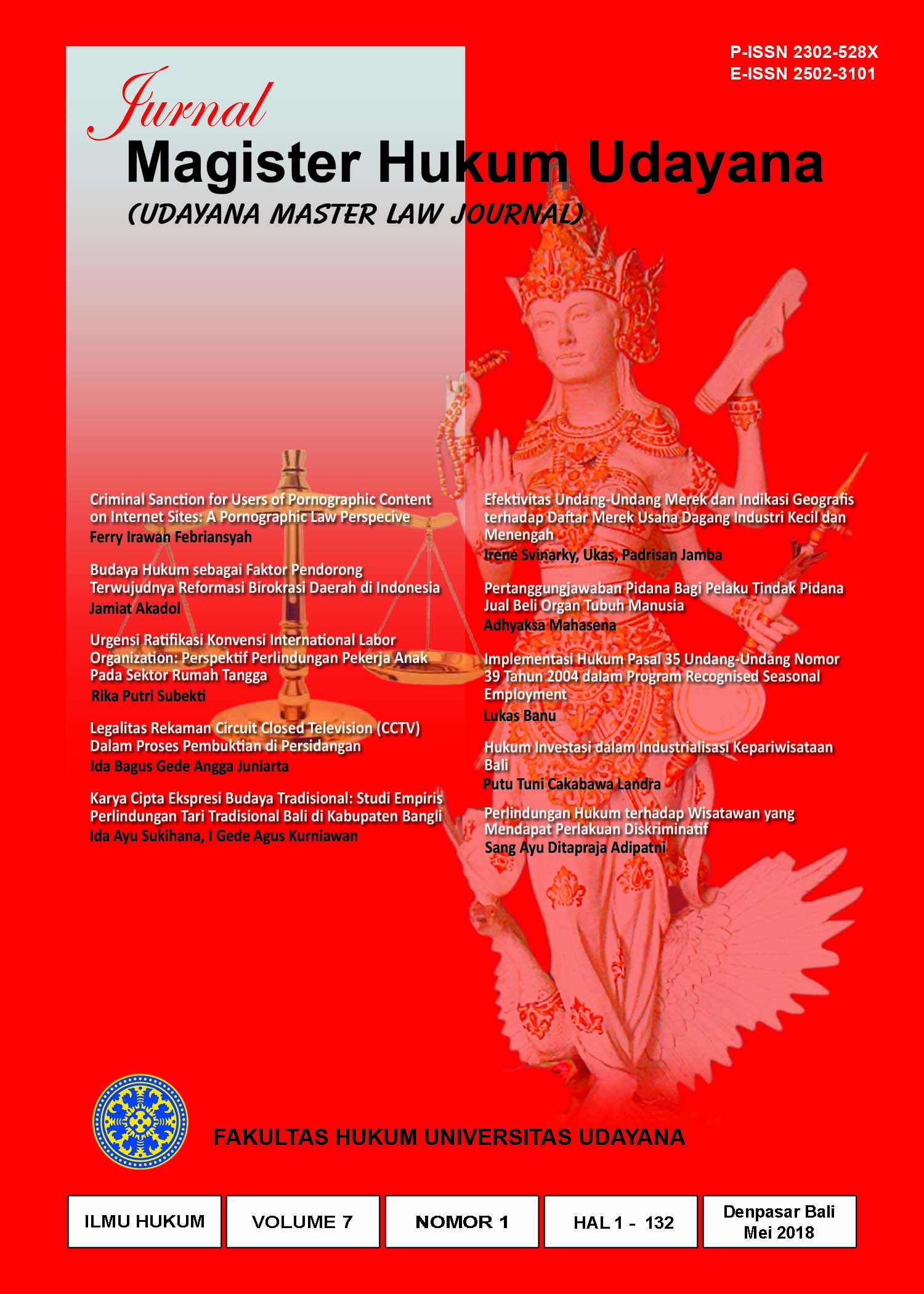Legalitas Rekaman Circuit Closed Television (CCTV) Dalam Proses Pembuktian di Persidangan
Abstract
One part of the judicial process is verifying evidence for searching the material truth of case to assist judges in making decisions. One aid that can be used in verification the evidence during the trial is the Information Technology in the form of Circuit Closed Television (CCTV) footage because it is not regulated in the positive Law in Indonesia. Because of that, in this research are used a normative method to answer the problem with the approach of legislation and approach to the concept. The legal arrangement of CCTV footage as evidence in Act No. 8 of 1981 on the Law of Criminal Procedure Code is not exist, because the Criminal Procedure Code are setting a limited valid evidence under the Act, but for the interest of seeking the material truth, then there makes Act No. 11 of 2008 on Information and Electronic Transaction which govern the other evidence in the form of Electronic Information and/or Electronic Records. The strength of evidence from CCTV footage has not been expressly provided in Act No. 11 of 2008 on ITE, so that the strength of evidence is still exempt, which means that the strength of evidence is still based on the judge’s conviction.
Salah satu bagian dalam proses peradilan yakni adanya proses pembuktian guna mencari kebenaran materiil dari suatu perkara guna membantu hakim dalam mengambil keputusan. Salah satu bantuan yang dapat digunakan dalam pembuktian di persidangan adalah teknologi informasi yang berbentuk rekaman CCTV, tetapi dalam persidangan dipertanyakan akan kekuatan pembuktian dari rekaman CCTV tersebut, karena tidak diatur dalam hukum positif di Indonesia. Penelitian ini mempergunakan metode penelitian normatif untuk menjawab permasalahan tersebut dengan pendekatan perundang-undangan dan pendekatan konsep. Pengaturan rekaman CCTV sebagai alat bukti ini dalam Undang-Undang Nomor 8 Tahun 1981 tentang Kitab Undang-Undang Hukum Acara Pidana (selanjutnya disebut KUHAP) tidak ditemukan pengaturannya, karena KUHAP mengatur secara limitatif alat bukti yang sah menurut Undang-Undang. Demi kepentingan mencari kebenaran materiil maka dibentuklah Undang-Undang Nomor 11 Tahun 2008 tentang Informasi dan Transaksi Elektronik yang mengatur tentang alat bukti lain berupa informasi elektronik dan/atau dokumen elektronik. Kekuatan pembuktian dari rekaman CCTV belum diatur dalam Undang-Undang Nomor 11 Tahun 2008 tentang ITE, sehingga pembuktiannya masih bersifat bebas, yang artinya kekuatan pembuktian dari alat bukti tersebut masih berdasarkan atas keyakinan hakim.
Downloads
Jurnal Magister Hukum Udayana (Udayana Master Law of Journal) by Faculty of Law Udayana University is licensed under a Creative Commons Attribution-NonCommercial 4.0 International License.



















